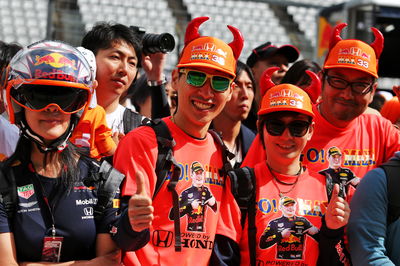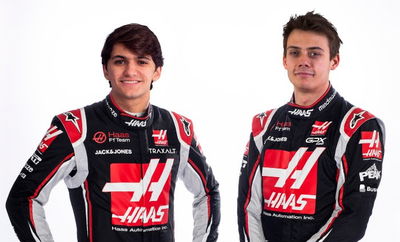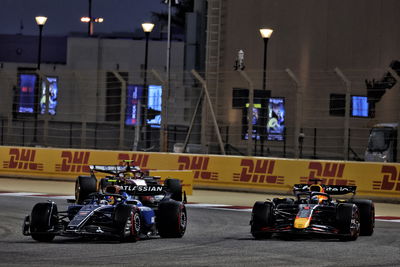The return of F1’s Dutch Grand Prix
For the first time since 1985, Formula 1 is preparing to return to the Netherlands at the revamped Zandvoort circuit later this year.
The last time the race was held saw a nail-biting scrap between McLaren teammates Niki Lauda and Alain Prost for victory over 70 laps around the old 4.252km Zandvoort track.
Starting 10th on the grid, reigning world champion Lauda made early progress up the order, pitted earlier than the majority of his key rivals, and found himself in the lead when Prost lost time with a slow pit stop.
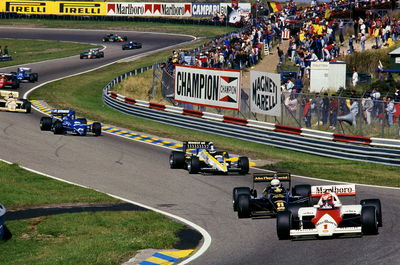
For the first time since 1985, Formula 1 is preparing to return to the Netherlands at the revamped Zandvoort circuit later this year.
The last time the race was held saw a nail-biting scrap between McLaren teammates Niki Lauda and Alain Prost for victory over 70 laps around the old 4.252km Zandvoort track.
Starting 10th on the grid, reigning world champion Lauda made early progress up the order, pitted earlier than the majority of his key rivals, and found himself in the lead when Prost lost time with a slow pit stop.
With no number one driver rule employed at McLaren, both Lauda and Prost were free to dice it out fair and square for victory, with Prost keen to make the most of the opportunity to pull further clear of title rival and Ferrari driver Michele Alboreto in the championship standings.
Lauda kept the determined Prost at bay in the closing stages and crossed the line just two-tenths clear of the Frenchman as he prevailed to victory with a vintage performance, sealing his 25th and final Grand Prix win in the process.
Despite hosting a number of classic races, Zandvoort dropped off the F1 calendar for the following season and remained absent from the country for 35 years when the company that ran the circuit (CENAV) went out of business, marking the end of the old Zandvoort circuit.
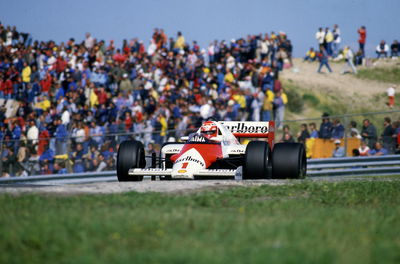
The seaside venue was sold in 1987 to Vendorado, a bungalow park developer at the time, who set about redesigning the circuit to a shorter 2.526km layout. While F1 would not race at the venue, Zandvoort was used for other disciplines of motorsport, including Germany’s Deutsche Tourenwagen Masters (DTM) and Formula 3 rounds.
Murmurings of a potential Dutch Grand Prix began to escalate in recent years, but finances were always going to be the biggest hurdle in getting the race back, with Zandvoort requiring extensive work to achieve the FIA Grade 1 status required to host F1 races.
Hopes of reviving the race hit a blow in early 2019 when the Dutch government ruled out any financial assistance, but Zandvoort insisted its bid remained credible, having secured an exclusive agreement to attempt to negotiate a deal with the championship by the end of March 2019. That halted ongoing discussions with rival Dutch circuit Assen, which hosts the country’s MotoGP and World Superbike rounds.
Zandvoort soon became the clear favourite and its return to the calendar was officially confirmed on May 14 2019, with F1 CEO Chase Carey commenting: “We’re particularly pleased to announce that Formula 1 is returning to race in the Netherlands, at the Zandvoort track.
“From the beginning of our tenure in Formula 1, we said we wanted to race in new venues, while also respecting the sport's historic roots in Europe.”
The Max Verstappen factor
Both F1 bosses and Zandvoort were also hoping to capitalise from the surge in interest in Dutch Red Bull driver Max Verstappen.
Having quickly asserted himself as one of F1’s biggest stars since joining Red Bull during the 2016 season, Verstappen began attracting swathes of fans at most European races. Crowds at Spa and Austria suddenly turned into a sea of fans sporting Dutch orange.
As Verstappen’s popularity and stock continues to rise, Zandvoort is fully expecting to be a sell-out event.
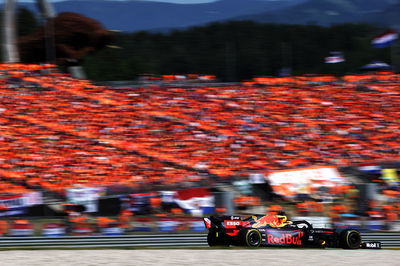
“A Dutch Grand Prix, with Max’s popularity, will be immense,” explained Red Bull team boss Christian Horner.
Speaking about the increased interest in F1 in Holland upon confirmation of the race’s return, Carey added: “In recent years, we’ve seen a resurgence of interest in Formula 1 in Holland, mainly due to the enthusiastic support for the talented Max Verstappen, as seen from the sea of orange at so many races.
“No doubt this will be the dominant colour in the Zandvoort grandstands.”
Earlier this month, Verstappen became the first driver to sample Zandvoort’s revised layout featuring its new 18.7-degree banking.
Verstappen hailed the revamp after christening the new Zandvoort banking and described the circuit layout as “really cool”. After completing his run in a 2012-spec V8 Red Bull, Verstappen believes it will be more fun to drive in F1’s latest, even-faster machinery.
“I think Turn 3 and the last corner, they look pretty impressive when you are going through the corner,” he said.
“It looks really nice. They did a really good job in renovating the track. It was a lot of fun to drive already with a V8 car, so I think already with these cars, it will be even better.”
Zandvoort faces prolonged wait
The 31st world championship Dutch Grand Prix was originally scheduled for a May 8-10 slot this year, but the ongoing coronavirus pandemic has put paid to those plans.
Unfortunately, we'll have to wait a little longer Zandvoort Until then... #DutchGP @Max33Verstappen pic.twitter.com/wMsqk6Lqpn
— Aston Martin Red Bull Racing (@redbullracing) March 19, 2020
With over 488,000 people now affected by the coronavirus outbreak worldwide, COVID-19 has caused great uncertainty for global sport, including F1.
The opening eight rounds of the 2020 season - including the Dutch Grand Prix - have now been either postponed or cancelled, with questions remaining on when the campaign will be able to start.
It is hoped the Zandvoort race can be rescheduled at a later date, possibly in August with the summer break now being brought forward to a spring slot to free up a month for racing to potentially take place.
While there is much understandable disappointment over a prolonged wait for the return of the Dutch Grand Prix, the event promises to be a showstopper when it finally takes place.
